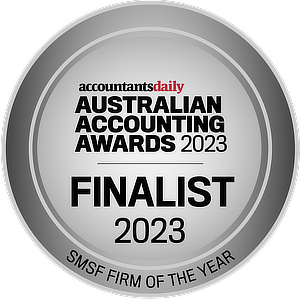Every SMSF requires an investment strategy. To put it plainly, an investment strategy is a document that details what the SMSF is going to invest in and why. Whilst this sounds simple, there are various issues that need to be discussed in the strategy and we will go into more detail about these below.
Why does my SMSF need an investment strategy?
The Australian Taxation Office (ATO) requires all SMSFs to have an investment strategy in place, as well as that the trustee perform a regular review of the strategy. In addition to this, the investment strategy is one of the documents that the auditor will request as part of the annual audit process.
What do I include in the investment strategy?
The investment strategy needs to take into consideration all of the fund circumstances and discuss:
- The investment objective of the fund and the needs of its members
- The risk of the fund’s investments
- The expected return on these investments
- The cash flow likely to be received and whether the fund’s overall cash flow requirements are being met (for example, if it is enough to pay fund expenses)
- The overall diversification of the investments and any areas where the fund may be at risk from inadequate diversification
- Whether the trustee should hold an insurance policy for the members of the fund
When do I need to write my SMSF’s investment strategy?
Investment strategies should be in place prior to the fund purchasing its investments. Once the strategy has been written and the trustee wishes to invest in a new asset class outside the fund’s current strategy, the trustee will need to amend the strategy before new investments are made. Consideration will also need to be given to the strategy when a trustee decides to realise their holdings in an asset class, or if the circumstances of members change.
Can Aquila Super help write my strategy?
Aquila Super is a seasoned SMSF administration service provider and can provide useful assistance regarding a fund’s investment strategy. To assist with its preparation, we have a template available for trustees which guides them through the various required sections. We also have some handy examples to help demonstrate how to discuss fund circumstances and the investment mix. If trustees have any concerns regarding the content of their strategy, they can contact us to make sure all the required details are included.
I have an accounting program that can create an investment strategy for me. Can I just use this?
We recommend trustees be cautious when using generic investment strategies produced by accounting software. Often, they do not include discussion on the various requirements listed above, including fund/member profiles, risk, expected return and liquidity. It is also important that trustees can provide a view of a fund’s particular circumstances and member requirements which vary across SMSFs.
Do I need to use percentage ranges in my investment strategy?
The ATO does not require trustees to show their investment mix expressed via percentage allocations (for example, Australian Listed Shares: 40-60 per cent). However, at Aquila Super we do recommend that, if trustees wish to include asset allocation percentages in their strategy, they be extra vigilant in reviewing the value of the investments. We often find trustees have inadvertently breached their asset allocation percentage due to fluctuating changes in market values.
If my investment mix doesn’t change and my objectives are the same, can I use the same investment strategy year after year?
Trustees are required to regularly review their strategy, and we usually see strategies being amended at least yearly due to changes in member circumstances or a new investment mix. However, when there is really no need to make an amendment, the trustees can demonstrate they have reviewed their strategy in the standard trustee minutes that are prepared along with the annual accounts. If they need extra help with their SMSF, trustees are also welcome to contact us and we can review the strategy to ensure the various factors have been taken into account.
What if I have a financial planner – I think they have my investment strategy?
Investment strategies prepared by financial planners are often very detailed and cover numerous issues relating to the fund. They may not meet the ATO audit requirements for investment strategies, however, and therefore it is appropriate to have a separate fund investment strategy prepared by the trustee. Note that this separate investment strategy would likely operate as a summary of the strategy prepared by your financial planner, with the ATO requirements added to ensure trustees have met their obligations.






